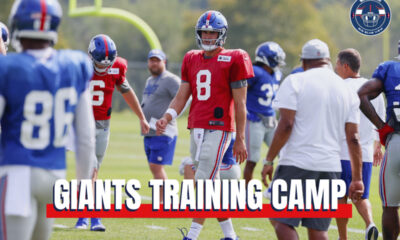
Last Saturday, Sept. 2, Rose Namajunas lost by decision to Manon Fiorot in her first bout as a flyweight. Fiorot is a fantastic competitor, and probably up for a title shot after this fight. This was not a light match to enter a new weight class on. Manon Fiorot is coming off a 6 win run and has champion goals of her own.
Even though Thug Rose is a two time strawweight champion, and just suffered a loss in a new division, she has decided to stay at flyweight and see it through. Some people were surprised by this news and started saying she is too small to change divisions etc.

Namajunas v Fiorot – image, MMA News
Strawweight Champion
The weight cuts for her at strawweight are too much physical stress she says. Additionally, she already conquered the strawweight division twice. Wanting to be challenged makes sense for an elite athlete. She plans to put on more muscle and become a champion in a new division. There is no absolutely no reason she couldn’t make that happen for herself. She has gone up against some incredible competitors in the past and been victorious. Zhang Weili, Jessica Andrade, Joanna Jedrzejczyk, and Tecia Torres are just some of the notable fighters she has won against. It has been a good run in the strawweight division. It will be fun to see how her presence as a flyweight competitor mixes things up.

Namjunas v Weili – image, Tapology
Weight Cut Consequences
Most MMA fans know that weight cuts “are hard”. But few may actually know what the consequences of extreme, rapid weight loss are for fighters. Frequent and extreme weight cuts put athletes at both long and short term risk.
Rapid weight loss (RWL) results in “decreased short-term memory, vigor, concentration and self-esteem as well as increased confusion, rage, fatigue, depression and isolation, all of which may hamper competitive performance”, (Franchini, Brito, Artioli, 2012). Research also shows that RWL results in decreased aerobic and anaerobic capacity. What can get confusing is the decrease to anaerobic capacity (think strength, maximal strength, explosive power) is generally negated when athletes are able to refeed and rehydrate after weigh-in. This is more true if they have a full day to recover, as opposed to 3 hours, (Franchini, Brito, Artioli, 2012).
The Culture of RWL
Even though kidney and heart failure are legitimate risks to athletes who are in weight restrictive sports, the practice is normalized within the sport itself (Lakicevic, Mani, Paoli, 2021). The athletes will know they don’t recover as quickly as they used to. They will “gas out” fast in a fight and during training. Still, they will argue they are fine because they felt strong going into the fight. This is one of the many reasons for the current debate on weight class divisions being reorganized. Serious, ongoing, investigation into how to remove the cultural norm of extreme weight cycling from combat sports altogether is warranted. The amount of deaths alone from RWL practices are enough to warrant changes. However, we know broad change take time.
Self Preservation

Image – Sportsbook Wire
It may take a while for boxing, wrestling, MMA and other weight restrictive sports to change their policies. Meanwhile, Rose Namajunas and other fighters are wise to be thinking of their health and longevity. Rose is an example of finding a healthier way AND staying in the game. This is as act of self preservation and care. To make a choice based on an improving quality of life as an athlete and person is long term planning.
I really hope she does put on more muscle and upsets the whole flyweight division.
References
Franchini E, Brito CJ, Artioli GG.(2012) Weight loss in combat sports: physiological, psychological and performance effects. J Int Soc Sports Nutr. Dec 13;9(1):52. doi: 10.1186/1550-2783-9-52.
Lakicevic, N., Mani, D., Paoli, A. et al. (2021) Weight cycling in combat sports: revisiting 25 years of scientific evidence. BMC Sports Sci Med Rehabil 13, 154. https://doi.org/10.1186/s13102-021-00381-2












